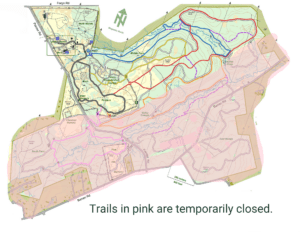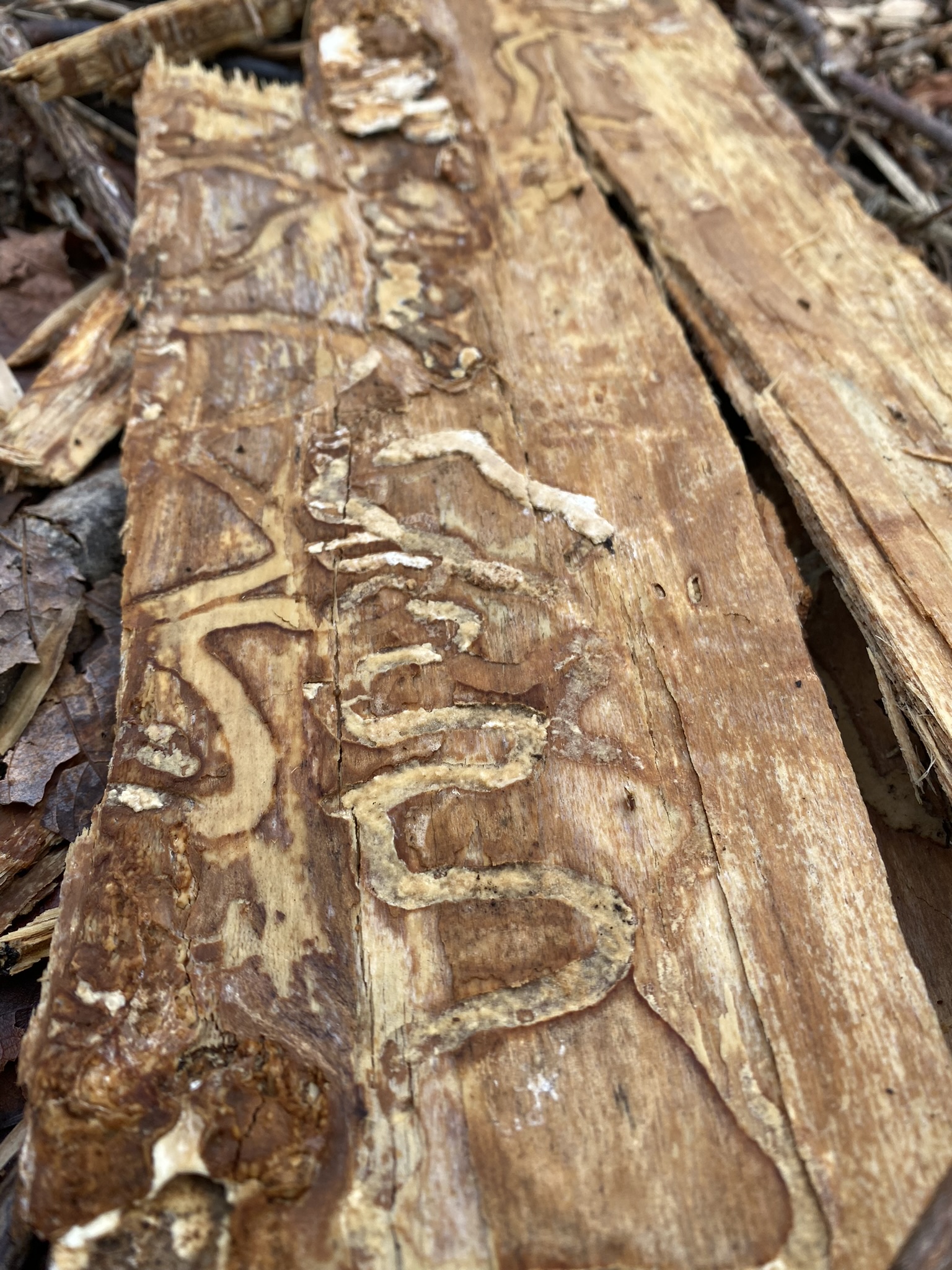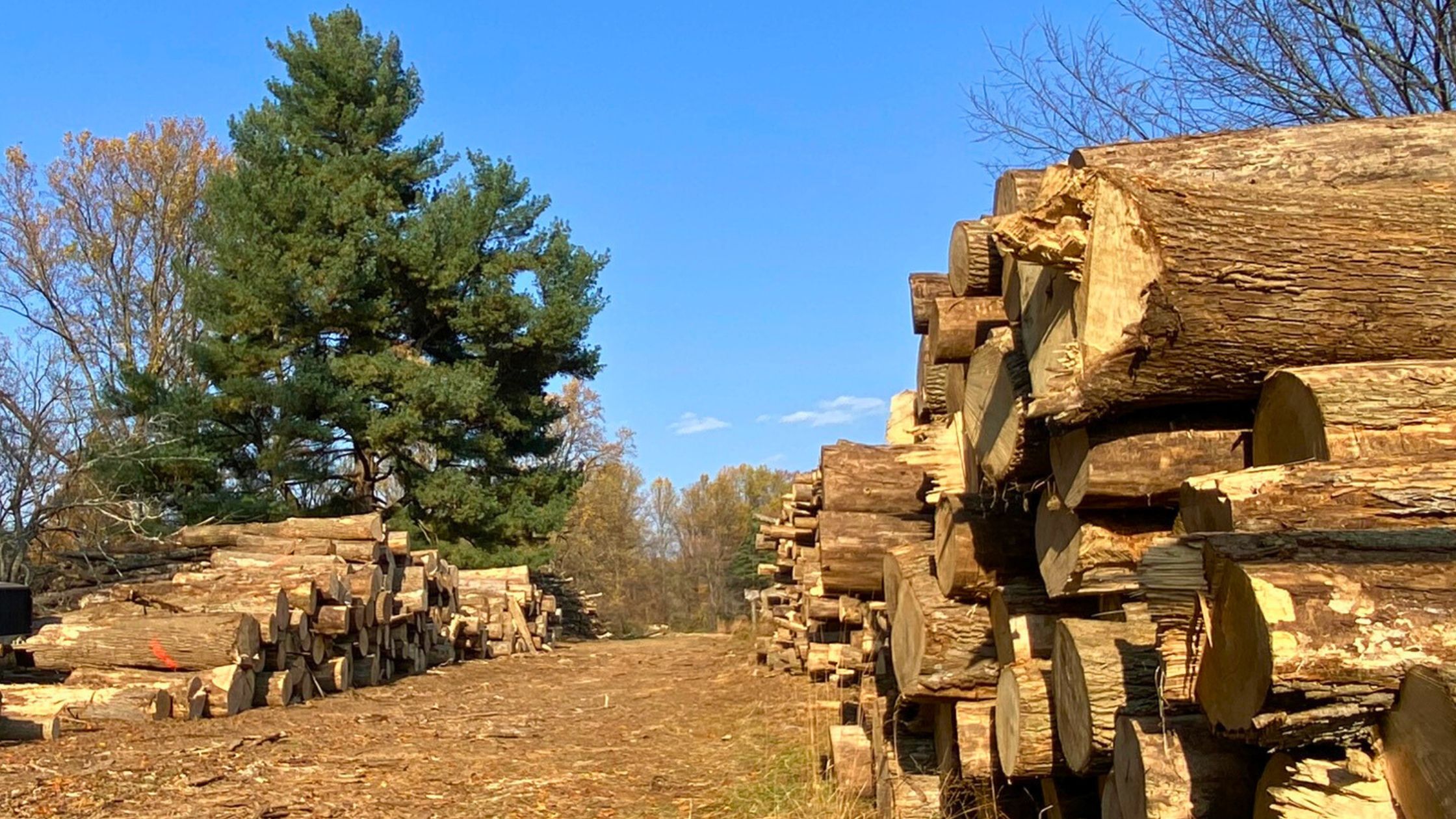The Ash Tree Crisis: Restoring Tyler Arboretum’s Trails
Trail Update – November 2024
Tyler Arboretum is thrilled to share that 11.5 miles of our 17 miles of hiking trails are now open to the public! While most trails are accessible, a few sections remain temporarily closed to allow native plants to establish and for the removal of remaining hazardous ash trees. We are working diligently and hope to reopen all trails in 2025, though we cannot guarantee this timeline.
Explore the Trails:

About the Ash Tree Crisis:
In early 2022, Tyler Arboretum identified the devastating impact of the Emerald Ash Borer (EAB) on its 550 acres of natural areas. Nearly 1,600 ash trees became hazardous, forcing the closure of our trails to ensure visitor safety. Since then, Tyler has worked tirelessly to address this challenge while restoring and revitalizing the affected areas.
Our Response
- Tree Removal Efforts: Began in 2023 using forestry mowing, mechanized harvesting, and arborist techniques, with careful attention to wildlife habitats and erosion control.
- Funding Support: This $500,000 project has been supported by reserves, private donations, and a grant from Pennsylvania’s Department of Conservation and Natural Resources (DCNR).
- Restoration Plans: Efforts are underway to stabilize trails, monitor invasive species, and prepare for replanting native trees beginning in 2025.
Emerald Ash Borer (EAB): The Cause of the Crisis

-
-
What is EAB?
A destructive beetle native to northeast Asia, the Emerald Ash Borer was first detected in the U.S. in 2002. Its larvae feed on the inner bark of ash trees, disrupting their ability to transport water and nutrients. -
Impact:
- 99% mortality rate for affected ash trees within 3-4 years.
- Over 36 states impacted, resulting in billions of dollars in damages.
- Devastating ecological effects, as all native North American ash species are at risk.
-
Why Not Treat the Trees?
For a large area like Tyler Arboretum, chemical treatments were not a feasible solution due to cost and scale. Promising biological control programs, like the use of parasitic wasps, are still in early stages.
For more in-depth information, visit:
-
Frequently Asked Questions (FAQ)

Why Are Some Trails Still Closed?
A small portion of trails remains closed to allow native plants to establish and for the removal of remaining hazardous ash trees. Safety and environmental restoration are our top priorities.
Did Tyler Sell the Wood?
No. The market for ash wood is saturated due to widespread EAB damage, making sales unfeasible. Instead, Tyler worked with contractors to remove and grind large quantities of debris.
What About Other Threats?
In addition to EAB, invasive pests like the Hemlock woolly adelgid threaten other tree species. Tyler is closely monitoring these issues to protect our natural areas.
Looking Ahead: Stewardship and Restoration
Tyler Arboretum is committed to creating a healthier, more resilient natural environment:
- Trail Stabilization: Ongoing work to ensure safe, sustainable access for visitors.
- Educational Outreach: Programs highlighting the importance of pollinator preservation and native plant ecosystems.
- Replanting Efforts: Large-scale tree planting projects planned for 2025.
Join Us in Restoring Tyler Arboretum:
Visit Us Today:
Explore the beauty of Tyler Arboretum’s open trails and witness the progress being made firsthand.

